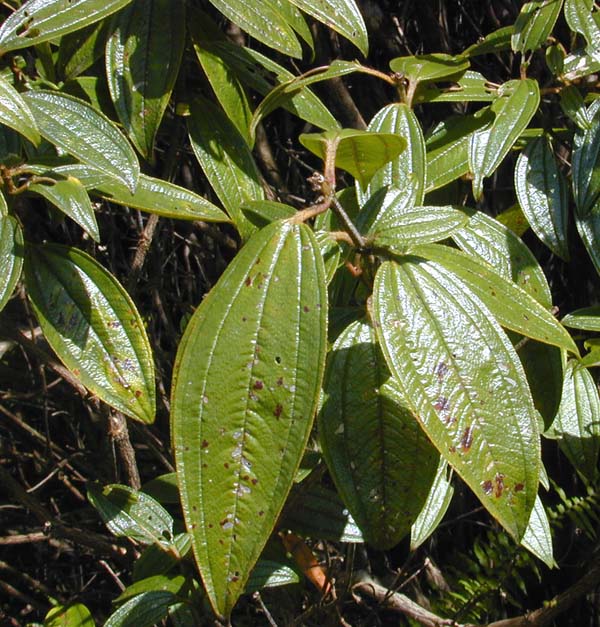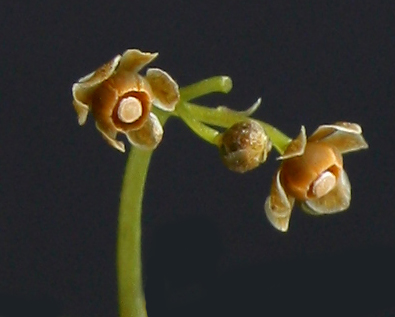|
Lewis Leonard Forman
Lewis Leonard Forman (29 June 1929 – 16 June 1998) was a British botanist, born in London. He was an expert on spermatophytes, particularly Menispermaceae, and specialised in the plants of Southeast Asia. He graduated from the University of London in 1950 and was appointed to the staff of the Royal Botanic Gardens, Kew in 1951, serving as a senior official there from 1966 to 1989. Forman was honoured with his eponymous species: * (Euphorbiaceae) ''Glochidion formanii'' Airy Shaw * (Lauraceae) ''Litsea formanii'' Kosterm. * (Melastomataceae) ''Medinilla formanii'' Regalado * (Menispermaceae) ''Stephania formanii'' Kundu & S.Guha * (Menispermaceae) ''Tinospora formanii'' Udayan & Pradeep References External links Flora of the Darwin Region {{DEFAULTSORT:Forman, Lewis Leonard 20th-century British botanists Alumni of the University of London 1929 births 1998 deaths ... [...More Info...] [...Related Items...] OR: [Wikipedia] [Google] [Baidu] |
London
London is the capital and List of urban areas in the United Kingdom, largest city of England and the United Kingdom, with a population of just under 9 million. It stands on the River Thames in south-east England at the head of a estuary down to the North Sea, and has been a major settlement for two millennia. The City of London, its ancient core and financial centre, was founded by the Roman Empire, Romans as ''Londinium'' and retains its medieval boundaries.See also: Independent city#National capitals, Independent city § National capitals The City of Westminster, to the west of the City of London, has for centuries hosted the national Government of the United Kingdom, government and Parliament of the United Kingdom, parliament. Since the 19th century, the name "London" has also referred to the metropolis around this core, historically split between the Counties of England, counties of Middlesex, Essex, Surrey, Kent, and Hertfordshire, which largely comprises Greater London ... [...More Info...] [...Related Items...] OR: [Wikipedia] [Google] [Baidu] |
Melastomataceae
Melastomataceae is a family of dicotyledonous flowering plants found mostly in the tropics (two-thirds of the genera are from the New World tropics) comprising c. 175 genera and c. 5115 known species. Melastomes are annual or perennial herbs, shrubs, or small trees. Description The leaves of melastomes are somewhat distinctive, being opposite, decussate, and usually with 3-7 longitudinal veins arising either from the base of the blade, plinerved (inner veins diverging above base of blade), or pinnately nerved with three or more pairs of primary veins diverging from the mid-vein at successive points above the base. Flowers are perfect, and borne either singly or in terminal or axillary, paniculate cymes. Ecology A number of melastomes are regarded as invasive species once naturalized in tropical and subtropical environments outside their normal range. Examples are Koster's curse (''Clidemia hirta''), ''Pleroma semidecandrum'' and ''Miconia calvescens'', but many other speci ... [...More Info...] [...Related Items...] OR: [Wikipedia] [Google] [Baidu] |
Alumni Of The University Of London
Alumni (singular: alumnus (masculine) or alumna (feminine)) are former students of a school, college, or university who have either attended or graduated in some fashion from the institution. The feminine plural alumnae is sometimes used for groups of women. The word is Latin and means "one who is being (or has been) nourished". The term is not synonymous with "graduate"; one can be an alumnus without graduating (Burt Reynolds, alumnus but not graduate of Florida State, is an example). The term is sometimes used to refer to a former employee or member of an organization, contributor, or inmate. Etymology The Latin noun ''alumnus'' means "foster son" or "pupil". It is derived from PIE ''*h₂el-'' (grow, nourish), and it is a variant of the Latin verb ''alere'' "to nourish".Merriam-Webster: alumnus .. Separate, but from t ... [...More Info...] [...Related Items...] OR: [Wikipedia] [Google] [Baidu] |
Charles Austin Gardner
Charles Austin Gardner (6 January 1896 – 24 February 1970) was an English-born Western Australian botanist. Biography Born in Lancaster, in England, on 6 January 1896, Gardner emigrated to Western Australia with his family in 1909, where they took possession of land at Yorkrakine. Gardner showed an interest in art and botany from youth, becoming engrossed in his state museum's copy of Bentham's '' Flora Australiensis'' (London, 1863-78) and received encouragement from the government's botanist Desmond Herbert and botanical artist Emily Pelloe. After a BSc in Biology, he was appointed a botanical collector for the Forests Department in 1920, and the following year was engaged as botanist on the Kimberley Exploration Expedition, resulting in his first publication, ''Botanical Notes, Kimberley Division of Western Australia'', which gave descriptions for twenty new species. In 1924 he transferred to the Department of Agriculture, and following a departmental re-organ ... [...More Info...] [...Related Items...] OR: [Wikipedia] [Google] [Baidu] |
Eucalyptus Formanii
''Eucalyptus formanii'', commonly known as Die Hardy mallee, Forman's mallee or feather gum, is a species of tree or mallee that is endemic to Western Australia. It has rough bark over most, or all of its trunk, smooth bark above, linear adult leaves, flower buds in groups of seven or nine, creamy white flowers and cup-shaped to hemispherical fruit. Description ''Eucalyptus formanii'' is a tree or mallee that typically grows to a height of and forms a lignotuber. The bark on part or all of the trunk is rough, grey and fibrous or flaky, smooth creamy brown to pinkish grey and shed in scruffy ribbons above. Young plants and coppice regrowth have more or less sessile, linear leaves that are long and wide. Adult leaves are also linear, held erect, the same glossy green on both sides when mature, long, wide and sessile or on a petiole up to long. The flower buds are arranged in leaf axils in groups of seven or nine on an unbranched peduncle long, the individual buds on pedicel ... [...More Info...] [...Related Items...] OR: [Wikipedia] [Google] [Baidu] |
Myrtaceae
Myrtaceae, the myrtle family, is a family of dicotyledonous plants placed within the order Myrtales. Myrtle, pōhutukawa, bay rum tree, clove, guava, acca (feijoa), allspice, and eucalyptus are some notable members of this group. All species are woody, contain essential oils, and have flower parts in multiples of four or five. The leaves are evergreen, alternate to mostly opposite, simple, and usually entire (i.e., without a toothed margin). The flowers have a base number of five petals, though in several genera, the petals are minute or absent. The stamens are usually very conspicuous, brightly coloured, and numerous. Evolutionary history Scientists hypothesize that the family Myrtaceae arose between 60 and 56 million years ago (Mya) during the Paleocene era. Pollen fossils have been sourced to the ancient supercontinent Gondwana. The breakup of Gondwana during the Cretaceous period (145 to 66 Mya) geographically isolated disjunct taxa and allowed for rapid speciat ... [...More Info...] [...Related Items...] OR: [Wikipedia] [Google] [Baidu] |
Edinburgh Journal Of Botany
Edinburgh ( ; gd, Dùn Èideann ) is the capital city of Scotland and one of its 32 council areas. Historically part of the county of Midlothian (interchangeably Edinburghshire before 1921), it is located in Lothian on the southern shore of the Firth of Forth. Edinburgh is Scotland's second-most populous city, after Glasgow, and the seventh-most populous city in the United Kingdom. Recognised as the capital of Scotland since at least the 15th century, Edinburgh is the seat of the Scottish Government, the Scottish Parliament and the highest courts in Scotland. The city's Palace of Holyroodhouse is the official residence of the British monarchy in Scotland. The city has long been a centre of education, particularly in the fields of medicine, Scottish law, literature, philosophy, the sciences, and engineering. It is the second-largest financial centre in the United Kingdom, and the city's historical and cultural attractions have made it the UK's second-most visited tourist ... [...More Info...] [...Related Items...] OR: [Wikipedia] [Google] [Baidu] |
Tinospora Formanii
''Tinospora'' is a genus of succulent woody climbing shrubs. Thirty-four species are currently recognized. Species generally send down long aerial roots from host trees. They have corky or papery bark. They are found in tropical and sub-tropical parts of Asia, Africa and Australia. The most common species are '' T. cordifolia'' and '' T. crispa''. Species ''Tinospora'' species accepted by the Plants of the World Online as of April 2021: *'' Tinospora arfakiana'' *''Tinospora baenzigeri'' *'' Tinospora bakis'' *'' Tinospora celebica'' *''Tinospora cordifolia'' *''Tinospora crispa'' *''Tinospora dentata'' *'' Tinospora dissitiflora'' *'' Tinospora esiangkara'' *'' Tinospora formanii'' *'' Tinospora fragosa'' *''Tinospora glabra'' *''Tinospora glandulosa'' *''Tinospora guangxiensis'' *''Tinospora hainanensis'' *''Tinospora hirsuta'' *'' Tinospora homosepala'' *'' Tinospora macrocarpa'' *''Tinospora maqsoodiana'' *''Tinospora merrilliana'' *''Tinospora neocaledon ... [...More Info...] [...Related Items...] OR: [Wikipedia] [Google] [Baidu] |
Botaniska Notiser
''Botaniska Notiser'' was a Swedish scientific periodical concerning botany, issued in Lund, by Societate botanica Lundensi or unds Botaniska Förening It was published from 1839 to 1980, when it fused with ''Botanisk Tidsskrift'', '' Friesia'' and ''Norwegian Journal of Botany'' to form the ''Nordic Journal of Botany''. In 2001, the journal reappeared as a regional journal for botany in south Sweden. Monographs were published in a parallel series, ''Botaniska Notiser Supplement'' (1947-1954). This series was fused in 1980 with '' Dansk Botanisk Arkiv'' under the name '' Opera Botanica'', which since then has been the monograph series of the ''Nordic Journal of Botany''. Editors *1900-1921 C. F. O. Nordstedt *1922-1928 Harald Kylin *1929-1937 Nils Sylvén *1938-1949 Henning Weimarck *1950-1953 H. Hjelmqvist *1954-1955 Tycho Norlindh *1956-1957 Henning Weimarck *1958-1964 H. Hjelmqvist *1965-1966 Bertil Nordenstam *1967-1968 Rolf Dahlgren *1969-1970 Ingemar Björkqvist and ... [...More Info...] [...Related Items...] OR: [Wikipedia] [Google] [Baidu] |
Stephania Formanii
''Stephania'' is a genus of flowering plants in the family Menispermaceae, native to eastern and southern Asia and Australia. They are herbaceous perennial vines, growing to around four metres tall, with a large tuber. The leaves are arranged spirally on the stem and are peltate, with the leaf petiole attached near the centre of the leaf. The name ''Stephania'' comes from the Greek, "a crown". This refers to the anthers being arranged in a crown-like manner. One species, '' S. tetrandra'', is among the 50 fundamental herbs used in traditional Chinese medicine, where it is called ''han fang ji'' (漢防己, "Chinese ''fang ji''"). Other plants named ''fang ji'' are sometimes substituted for it. Other varieties substituted include ''Cocculus thunbergii'', '' C. trulobus'', ''Aristolochia fangchi'', '' Stephania tetrandria'', and ''Sinomenium acutum''. Notable among these is ''guang fang ji'' (廣防己, "(GuangDong, GuangXi) fang ji", ''Aristolochia fangchi''. Because of its tox ... [...More Info...] [...Related Items...] OR: [Wikipedia] [Google] [Baidu] |
Blumea (journal)
''Blumea - Journal of Plant Taxonomy and Plant Geography'' (''Tijdschrift voor de Systematiek en de Geografie der Planten'' in Dutch) is a peer-reviewed journal of botany published by the National Herbarium of the Netherlands. Except for a short period during World War II, ''Blumea'' has been published continuously since 1934. It deals with the taxonomy, morphology, anatomy, biogeography, and ecology of spermatophytes and cryptogams native to Southeast Asia, sub-Saharan Africa (excluding South Africa), and South America. ''Blumea'' is published three times a year, with each issue numbering around 600 pages. References External links Publication homepage''Blumea'' online at IngentaConnectBlumeaat SCImago Journal Rank Blumeaat HathiTrust HathiTrust Digital Library is a large-scale collaborative repository of digital content from research libraries including content digitized via Google Books and the Internet Archive digitization initiatives, as well as content digiti ... [...More Info...] [...Related Items...] OR: [Wikipedia] [Google] [Baidu] |



_W_IMG_2431.jpg)


